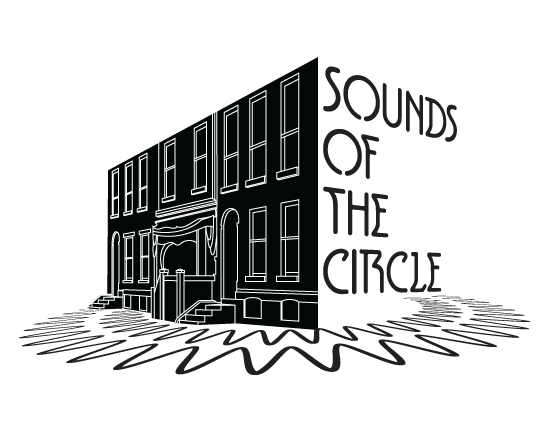
Sounds of the Circle harks back to a time when North Philadelphia was a mecca of jazz performance—- to a time when Ridge Avenue and Columbia Avenue (renamed Cecil B. Moore Avenue) were lined with jazz venues where local musicians could see their musical heroes and hone their own musical chops. Today, landmarks of those venues are almost nonexistent.
Thanks to Faye Anderson and All That Philly Jazz for tracking down the histories of the venues and recalling their significance to the artistic, cultural, social, and economic life of North Philadelphia. Check out some posts from All That Philly Jazz, as well as an article from HiddenCity Philadelphia, to get a sense of the environment that stimulated the creative energy of the “inspired circle”.
During Philadelphia’s golden age of jazz, there were jazz clubs in every neighborhood. There were so many that folks in North Philly didn’t go to joints in South Philly and vice versa. There were a handful of clubs that reached legendary status and attracted patrons from all over the city. The Blue Note at 15th Street and Ridge Avenue was “the town’s swankiest jazz emporium.”
From 15th Street to Columbia Avenue (later renamed Cecil B. Moore Avenue), Ridge Avenue was a jazz corridor where legends-in-the-making roamed.
Ridge Avenue’s last standing jazz club
Today it’s the last building standing on a lonely stretch of Ridge Avenue in Sharswood, a vacant-eyed skeleton that looks as if it might crumble any second. But back in the day, this emaciated Victorian knew how to party. Operating as the Checker Cafe (later, the Checker Club), it was part of a bustling African American entertainment district where jazz performers like Pearl Bailey, Cab Calloway, and Bessie Smith honed their craft.
It’s a bit ironic that the Checker is the only one of those Ridge Avenue joints to survive. It wasn’t the biggest or best known of the venues that lined the avenue during North Philadelphia’s jazz heyday in the mid-20th century. That distinction was probably held by the Pearl Theater on the next block, where Bailey and her sister Jura worked as ushers, and brother Bill tended the candy counter.

The Web Bar – 1964 Race Riot
WEB BAR
The Web Bar was located on Columbia Avenue (renamed Cecil B. Moore Avenue) between 16th and 17th Streets. Like all the jazz spots along the “Golden Strip,” the Web fell victim to the 1964 race riot.
The building was demolished in 2006.
THE GOLDEN STRIP
The biggest concentration of bars and clubs frequented by blacks and offering Jazz was along Columbia Avenue (later renamed Cecil B. Moore Avenue). Among what as upwards of fifteen different venues were the Crystal Ball, 820 Club, Spider Kelly’s, Watts Zanzibar — one of the few black owned venues—and the North West Club. [Lee] Morgan played at many of these with groups made up of his peers. The trumpeter Cullen Knight remembered seeing Morgan at the North West, leading a band consisting of tenor saxophonist Odean Pope and a rhythm section of McCoy Tyner, Reggie Workman and Ronald Tucker.
Both the Zanzibar and North West were private clubs, and these were often keener to employ, under-age musicians than other venues; in addition, removed from some off the commercial concerns of the regular bars, they were thought of as sites for some degree of experiment among young musicians, as ‘hardcore’ bebop clubs where players could cultivate their jazz improvisation without needing to make concessions to dancers or casual listeners. Private venues would often pay the musicians a decent nightly fee, often around $10.
In Whisper Not: The Autobiography of Benny Golson, the NEA Jazz Master recalled his days on the Golden Strip with John Coltrane:
On jam days—Saturday afternoons between four and seven—John and I started at one end of Columbia Avenue, where most of the clubs were located, and proceeded toward the other end. We played at each club for an hour, then moved to the next. If we didn’t get to a particular club, we started there the following week. These clubs were small, on the ground floor of apartment houses or in storefront slots, long and narrow.




